by Marcelo Guimaraes – Founder & Owner of Discover Scandinavia Tours
INTRODUCTION – WHAT YOU WILL GET FROM READING THIS
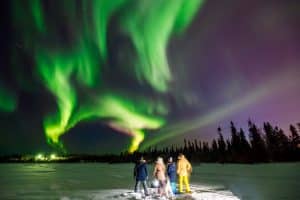
In the last few years, I have created many Northern Lights tours for hundreds of clients. Often the interactions are initiated with the following request: “We want to go on a trip where the ultimate goal is to see the Northern Lights. That’s the most important thing for us, since it has been on our ‘bucket list’ for a long time. Can you help us see the Northern Lights?”
It happens all the time. ALL the time.
Now think through this scenario with me: you decided to go on a week-long vacation with one single goal – to see the Northern Lights. You were determined to make that happen! Now, let’s consider two possible outcomes to this thought experiment of ours:
Northern Lights Vacation Package – Outcome 1
You could see the Northern Lights 3 nights (although on one of those nights it was a fairly faint display), BUT you ended up sleep deprived, because the hotel was so noisy and uncomfortable. Also, you were mostly stuck in a cabin in the middle of nowhere, so you were quite bored in the day time because you really didn’t know what to do or what to see. To add to it all, half your luggage got lost along the way because it took so many connections to get you to that middle-of-nowhere land. Those Northern Lights tours are out there… they happen.
Northern Lights Vacation Package – Outcome 2
You did not find the best time to see the Northern Lights, BUT otherwise you had a fantastic time. You saw incredible places, enjoyed awesome winter activities, slept like a baby at your awesome hotels (and loved their breakfast!) and took so many beautiful pictures that your Facebook account exploded when you tried putting half of them in there.
My guess is that, to most people, Outcome 2 is the most appealing choice, regardless of you having failed to accomplish your goal. So, it is pretty reasonable to conclude that a successful experience depends heavily on starting off with the right goal! Well, those are the Northern Lights tours WE create!
Notice that I didn’t even go into the much more catastrophic scenario where you A) get all the bad stuff from Outcome 1 AND B) you don’t see the Northern Lights (condition from Outcome 2). Talk about misery! No matter how much determination you put into it, certain things are simply out of anyone’s control, making this a possible – yet highly undesirable – outcome as well. You can even find the best places to see the Northern Lights if you know where to go, but other factors can be much harder to control.
Here’s a different spin: you are now determined to go on an incredibly awesome vacation, to see and experience new things, and to – IF luck is on your side – you get to see the Northern Lights as the perfect bonus to your already fantastic vacation. This means: with some solid planning, in the worst-case scenario you get Outcome 2.
With that in mind, I decided to gather my experience on the topic (and that of hundreds of clients) and create yet another Aurora Borealis guide (another name for “Northern Lights”), but with a different purpose. The goal here is to offer you the knowledge and tools you will need in order to ensure that, whenever you travel to see the Northern Lights, you: 1) increase your chances of enjoying the spectacle; 2) ensure that you will have a magnificent vacation, not just one of the many blah Northern Lights tours out there. That is why I am calling this a practical guide, not another “ultimate” one.
WHAT THIS GUIDE IS NOT
Almost every blog I came across on the topic starts with a pseudo-scientific description of the phenomenon, but is that really what matters to you? Are you awake in bed thinking “what is the Northern Lights???” I doubt it. If I were to guess, you are reading these words because seeing the Aurora Borealis has been on your bucket list (someone really ought to come up with another expression for this cliché) for quite a long time and you want to maximize your chances of making it happen, right? So, you sat down in front of a screen and searched for the answers. Then, you found pages upon pages of “ultimate guides” which insist on teaching you the physics behind the whole thing. You found 23-things-you-need-to-know types of lists that regurgitate the same information over and over. They also share with you powerful little tips, such as: keeping your eyes open will allow you to better see the Northern Lights. Not to mention the “Best Places to See the Northern Lights” and “Best Times to See the Northern Lights” lists. Those are everywhere and can be entertaining, but do they really help create great Northern Lights tours? Maybe. Maybe not.
Therefore, as a disclaimer: the intention here is not to enable you to come across as scholastic if you decide to discuss the topic at a party. I am also not attempting to turn you into an expert (or novice, even) in Northern Lights photography. I am not aiming at deriving a thorough treatise on any aspect of the topic, but, rather, to outline a solution to a problem I have seen again and again, when clients have come to Discover Scandinavia Tours asking us for awesome Northern Lights tours.
Let’s look into it, then.
VIEWING THE LIGHTS: MANY FACTORS COUNT, BUT NOT EQUALLY. STAY PRACTICAL
Very simplistically, a few things (let’s call them “factors”) need to happen in order for you to have a chance to see the Aurora Borealis. I will list those factors in what I believe to be a scale of importance, from least to most important (in the sense of affecting your odds of witnessing a show). What is the best time to see the northern lights? What are the best places to see the northern lights? Let’s look into all that..
FACTOR 1: We need the solar activity…
… that generates the whole dance in the skies. Without it, there is no Aurora. So, why is this the least important factor on my scale? Because it’s the one thing we really don’t have to worry too much about: our Sun is, essentially, continuously emitting the charged particles that react with atoms in our atmosphere and generate the Lights. Sure, the level of intensity (activity) with which those particles are sent our way varies from day to day, year to year, etc., but it doesn’t make sense to try to time your vacation based on that. I have seen many good minds debating “best possible years” or “best months” when it comes to high activity levels, according to some prediction they saw somewhere, but what does that matter when you have a giant cloud in the sky covering the whole thing? Can you see the moon and the stars “behind” that cloud? No, so you should not expect to see the Aurora as well. Spoiler alert: that cloud – as well as all its cloud friends – is going to be on this list, too. There’s also the matter of light pollution, but that’s another story.
How to address this factor: don’t think much about it and pick a year to travel that is best for you based on your own set of circumstances, not the prediction of high levels of solar activity. Really, it’s that simple. It should be “most convenient year for you,” not “best time to see the Northern Lights.”
FACTOR 2: We need to be north…
… like, REALLY north. There is a concept called “Aurora Zone” which defines a ring around the Arctic Circle and establishes the locations where the Aurora is typically visible. Yes, sometimes you can view them outside of this band, but focusing on anomalies is not practical here, so let’s not go there. This is one of the reasons people often discuss the best places to see the Northern Lights.
How to address this factor: plan on traveling north. Specifically, think Alaska, northern Canada, Russia, certain regions in the UK and, of course, Scandinavia (Iceland, Northern Norway, Northern Sweden, Northern Finland and even southern Greenland). As a rule, the best places to see the Northern Lights are way up there. True, I am biased, but I believe that Scandinavia is your best option for great Northern Lights tours. Why? Accessibility and diversity. Where else can you move relatively little and find yourself in an entirely different destination, still within the Aurora Zone? It’s a fantastic way to add a ton of variety to your destination in a very efficient manner. More on this later on.
FACTOR 3: We need dark skies at night…
… which translates into late fall and winter. When you are that far up north, the sky is too bright outside of the September-through-March window even late at night, so the Aurora can’t compete against that. As for what time at night: another sort of meaningless question. Physics dictates how our clocks and watches tick, but it doesn’t obey them. The Northern Lights dance when they hear their own music. So, forget “best times to see the Northern Lights” and focus on what works best for you.
Another huge consideration is city lights. For us: light pollution. I have found myself in the middle of Reykjavik, near my hotel, in January, looking up and squinting to catch only a faint glimpse of green up above. At the same time, a friend of mine (a local guide) kept sending me the most incredible, Aurora-green-filled pictures taken from his apartment balcony at the very moment. Were we looking at different things? No! But I was surrounded by tons of light pollution while he sat in the serenity of his apartment’s dark surroundings, in the outskirts of the Icelandic capital, light-pollution free. A pro is a pro. I have also seen the Aurora from the Blue Lagoon, after touring the Golden Circle, which was incredible.
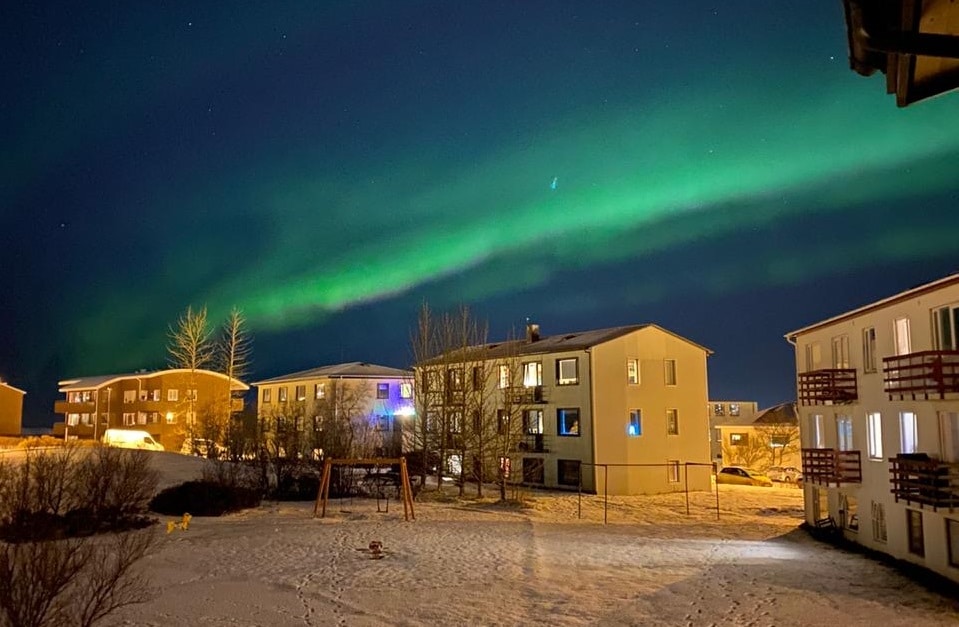
Keep in mind, though: 1. (late in the year) + (high up north) = cold. There’s no two ways about it. But, as they say in Iceland: “there’s no cold, only insufficient clothing.” Gear up correctly for an awesome late-fall or winter vacation! 2. Get to locations away from city lights and anything else competing for brightness in the sky (sources of light pollution).
FACTOR 4: The BIG one! We need clear skies…
… because just like you can’t see the moon and the stars on a cloudy night, you also should not expect to see the Aurora Borealis then. The twist: unpredictability. Weather forecasts will give us hints of how clear or cloudy skies will be at some point in the near future, but things can change in the last minute. That makes planning tricky.
How to address this factor: give yourself time, as much time as you can. Do not make the mistake of allocating a single night for Northern Lights viewing, for instance. The more nights you have at your destination, the higher your chances of finding the best times to see the Northern Lights.
How Discover Scandinavia Tours handles this:
in addition to carefully planning multiple Northern Lights “safaris” (or “hunts,” as those excursions are also called) in each of our Northern Lights tours, we only work with local guides who:
- Carefully monitor the weather across the region, which allows them to drive to the best places to see the Northern Lights in each country;
- Offer the possibility of re-booking our clients at a future night, if the weather on the original night doesn’t cooperate;
- Alert us of weather-related cancellations with plenty of time for us to rework our client’s plans in real time and keep the vacation flowing seamlessly.
Flexibility is key here, so we create itineraries that allow for activities to be moved around to accommodate weather changes without disrupting the essence of the program. A prime example of this strategy is seen in our Deluxe Iceland Winter program. Of all our Northern Lights tours, that is probably our most popular one. We have one safari scheduled for the beginning of the Reykjavik segment of the program and once scheduled for the beginning of the South Coast segment. If those nights don’t work, we can try again on the other open nights later in the segments.
THE SPECIFICS: WHAT IS THE BEST PLACE TO SEE THE NORTHERN LIGHTS?
As you saw in the previous section (FACTOR 2), you will need to be in the Aurora Zone. What makes Scandinavia a particularly great choice as a destination is the fact that you can experience so many different sights and attractions with relatively short (and very efficient) travels. Let’s look at a breakdown per country:
ICELAND – the whole country
Northern Lights tours in Iceland are hugely popular for many reasons: the country is highly accessible, incredibly gorgeous and it is the only country on our list where you can see the Aurora wherever you happen to be! Even though it is, except for the tiny island of Grímsey, entirely below the Arctic Circle, Iceland offers great viewing conditions all over the country. It also helps that many areas are entirely free from light pollution. Again, you will also have the opportunity to enjoy well-known attractions such as the Blue Lagoon and the Golden Circle, for instance.
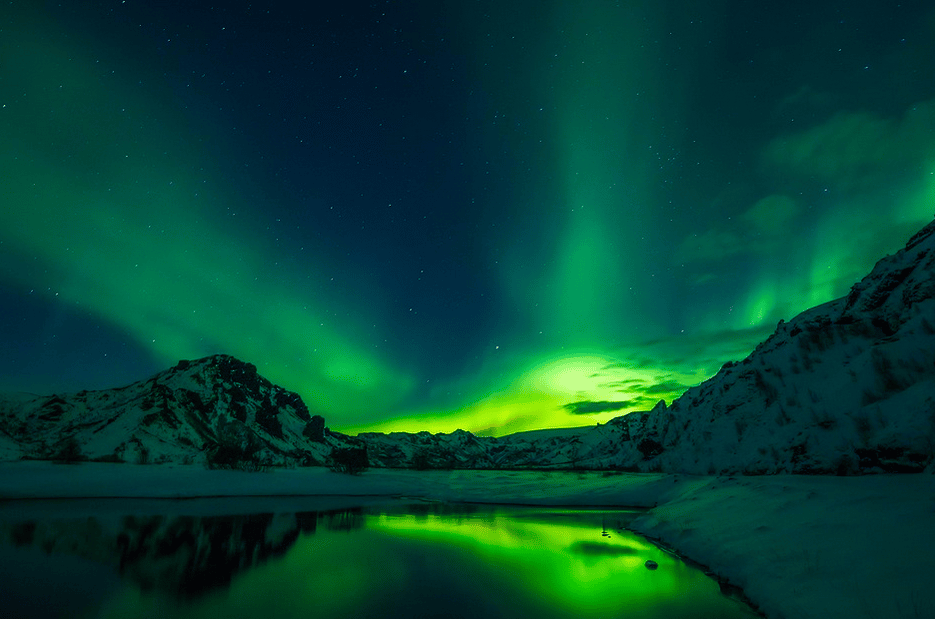
NORWAY – Norwegian Lapland
Not that it is impossible, but do not expect to see the Aurora in Oslo, the capital, or Bergen (the “gateway to the fjords”), let alone beautiful Stavanger, in the south of the country. For that you will need to travel north, to the Norwegian Lapland. The city of Tromsø has been a very popular destination for many years, but some travelers may find the area somewhat overcrowded, depending on when they visit. A couple of excellent alternatives are the very charming town of Alta (one of my favorite places in Northern Norway), in the region known as Finnmark, and the town of Kirkenes, very close to the border with Russia. We are talking seriously northern, here! Kirkenes is home to an outstanding Snow Hotel and a large assortment of typically-Lapland activities (more on this later), which many of our clients experience in our Deluxe Norway Winter tour. Here you also have the opportunity to stay in a cabin with a glass wall, allowing you to catch the lights from the warm comfort of your room.
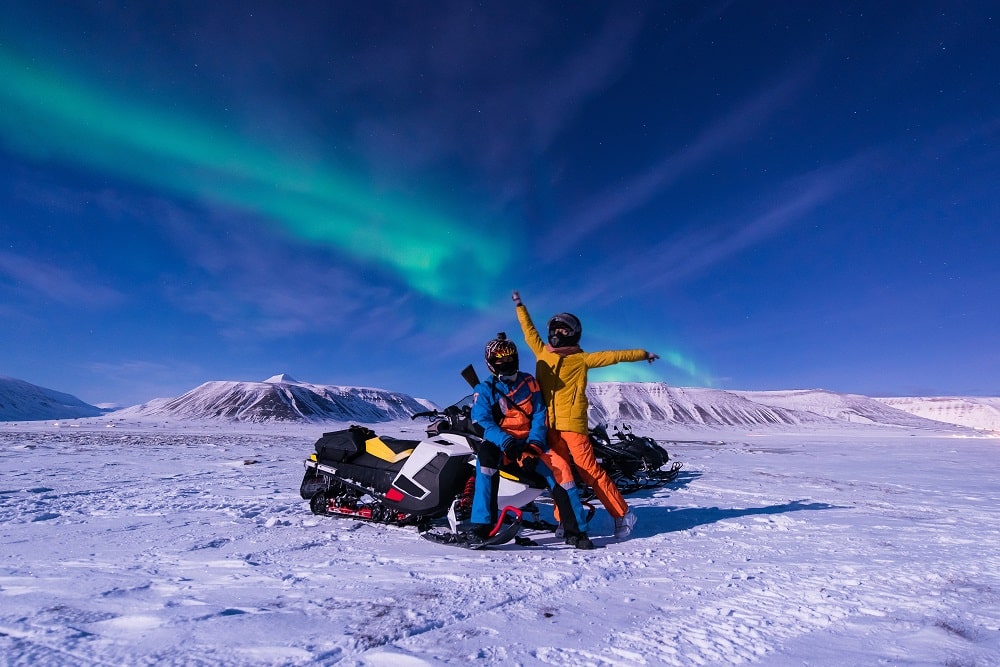
SWEDEN – Swedish Lapland
Just like with Norway, catch a plan from the capital (Stockholm) and head north to the Swedish Lapland. There, in Jukkasjärvi, you will find the world-famous Ice Hotel. A few locals have described the place to me as “too touristy,” but you and I are not locals (well, unless you are) and I strongly believe that it offers a unique experience. No, it is not inexpensive, but it gives you something special for your set of life memories.
And if you read about Northern Sweden in the context of the Aurora Borealis, you will most likely find the town of Abisko is considered “the best place to see the Northern Lights.” lists. Well… forgive me, Abisko, but I am not sure I agree. Great, yes, but “the best” ? Because of its climate and location, Abisko allows for great viewing conditions, but the town is quite remote and of relatively difficult access. Additionally, if you enjoy a touch of high-end to your accommodations, keep in mind that most of what you will find there is on the “cozy, relaxed and unfussy side:” guesthouses and hostels. Again, we are examining the question as a whole, not just assessing chances of viewing the Aurora.
FINLAND – Finnish Lapland
Same story here: hop on a flight from Helsinki and get to the Finnish Lapland, where Rovaniemi is the central hub. You can also get there by train, but it will take a while. So, it simply depends on how much time you have. You can choose to stay in the vicinity of Rovaniemi or to visit a number of other destinations, such as nearby Kemi. For a higher degree of remoteness you can venture out into Ivalo (where you can also fly from Helsinki) or, even farther north, Inari.
Our discussion about light pollution applies here as well. Rovaniemi has a lot of lights, so the thing to do is to book a tour with knowledgeable and well-equipped guides who will safely and efficiently take you to the best (optimum) spots. We explore Rovaniemi, Kemi and a number of other locations in our Dogsleds & Aurora Borealis in Lapland tour, another popular choice among our clients.
A word about the very famous glass igloo resort in Kakslauttanen: not my favorite. In fact, I do not recommend it. If you would like to know my reasons for saying so, feel free to drop me a line and I will be happy to share more with you. The good news is: there are many other excellent options for glass-accommodation types of places in the area.
THE SPECIFICS: WHEN IS THE BEST TIME TO SEE THE NORTHERN LIGHTS?
Ah, finally we get to the number ONE question we receive from clients!
The answer will disappoint you, though: there isn’t one. See the theme here? It is best to pass on this idea of looking for “best this” and “best that” and go for optimization, instead. Okay, my engineering background makes me somewhat biased, but the strategy works!
Each time period has its pros and cons, so let’s look at them separately:
MID SEPTEMBER through OCTOBER
The big plus here is the temperatures on the milder side. Remember: Kirkenes, not Miami. “Mild” is relative. Another advantage is that this is probably the least crowded you will find your destinations, as a rule. This, in turn, can signify friendlier prices (still, relative: Scandinavia, not Portugal). On the flip side, many activities enjoyed in the Lapland winters are not being offered yet, due to lack of snow or “warmer” temperatures. So, if the cold scares you, September may be your personal best time to see the Northern Lights.
NOVEMBER through EARLY DECEMBER
A really nice time to travel. Temperatures are dropping, but are not the coldest yet. Activities start in most places and prices are still somewhat protective of your wallet. Wallet size, as we all know, is also relative. You can also catch some outstanding Christmas Markets at this time, depending on where you are. Scandinavian Christmas Markets are a lot of fun and I highly recommend visiting them, if you can. One of my favorites is in the Estonian capital, Tallinn (a 2-hour ferry ride away from Helsinki), in their spectacular Old Town. “Beautiful” doesn’t fully describe it. It’s more than that!
MID DECEMBER through MID JANUARY
The holidays: prices go to the stratosphere, places get super crowded, stress and carols intertwine in the air. Traveling during the holidays can be done successfully, but the topic is complex and I will reserve it for another… practical guide.
MID JANUARY through MID MARCH
This would probably be my second choice. Generally not as uncrowded as November and certainly colder, but now you have the full array of activities available for you to enjoy. Like most things in life, it is a trade off.
NOTE: I have seen local operators who push their Aurora Borealis tours through mid April, but I recommend against it unless you are not concerned at all about enhancing your viewing odds.
CONCLUSION: SWITCH YOUR FOCUS, BE PREPARED AND HAVE A GREAT AURORA BOREALIS TRIP
Don’t spend a long time “researching” (reading other blogs), the best places to see the Northern Lights, the best time to see the Northern Lights or the most incredible Northern Lights tours. It makes more sense to assess what matters to you when traveling, vacationing, and make your decisions (when to travel, for instance) based on those criteria, not when some prediction points to the highest level of this or lowest level of that. I have shared with you the envelopes, if you will, for when and where you should travel if you want a solid chance to see the Northern Lights. The specific selection of when and where, as long as you are within those envelopes, should be made in such a way that you will have the most comfortable and exciting vacation possible. Those selections may not work so well for your neighbor, for instance, but they have to be perfect for you.
In summary, my humble take on the solution is: abandon the idea of “best” time or place for Aurora Borealis viewing. Instead, focus on the time that works best for you and the destination which offers the most experiences you crave. Optimize for global-vacation success and treat the Lights as a possible nice gesture – another gift – from Mother Nature!
To further assist you I will share one last piece of information, just a few words on what you can expect to see and do in each Scandinavian destination:
AURORA BOREALIS TOURS IN ICELAND
What makes this country truly magical is the variety in scenery you get as you move from region to region: endless waterfalls, black-sand beaches, canyons, glaciers, mountains, caves and ice caves, just to name a few. There you will also find the Blue Lagoon and the Golden Circle, Iceland’s most famous attractions. There is no shortage of amazing winter activities here. To make everything better, Icelanders are, as a rule, very friendly, welcoming and passionate about their gorgeous and peaceful country. You will not be bored in Iceland, even if you try. Food is of paramount importance here, so expect to be treated to very unique delicacies (starting with their own hotdogs) and to have no shortage of options from casual to gourmet dining.
Icelanders believe in beauty in simplicity and that is reflected in their architecture and their enjoyment of life. I, personally, have visited the country numerous times (including a trip around the island with my whole family, even my 5-month-old daughter at the time) and I can’t wait to be back there.
AURORA BOREALIS TOURS IN LAPLAND
Plain and simple, Lapland is an adventure. Home of the best winter activities. Not necessarily in the sense of “extreme,” unless you want it to be, but more in the sense of “unique.” It is a place like no other. The 3 countries are all different, but the feeling you have after you come back home from that above-the-Arctic region is generally the same: “wow… I can’t believe I was there! What an awesome adventure!” I know that is how I have felt every time I came back from there.
Activities which define the region in the Northern Lights months include: becoming acquainted with the Sámi culture (indigenous people to the area), husky sledding, reindeer sledding, ice fishing, snowshoeing, snowmobiling and king-crab safaris (in Kirkenes, for instance). Spending a night in an Ice Suite is also a must, one of those things you simply have to try! Not the ultimate word in comfort, but definitely an adventure. Northern Lights tours (safaris) generally happen in one of several ways: by bus, on snowmobiles, or by dog sledding. If you are thinking “how cool is that?” I am right there with you. Very, very cool.
Just as in Iceland, expect to be greeted by very friendly people and treated to delicious delicacies.
Expect to have a truly successful vacation… which may be made even more special by a gorgeous Northern Lights show.
Best of luck!
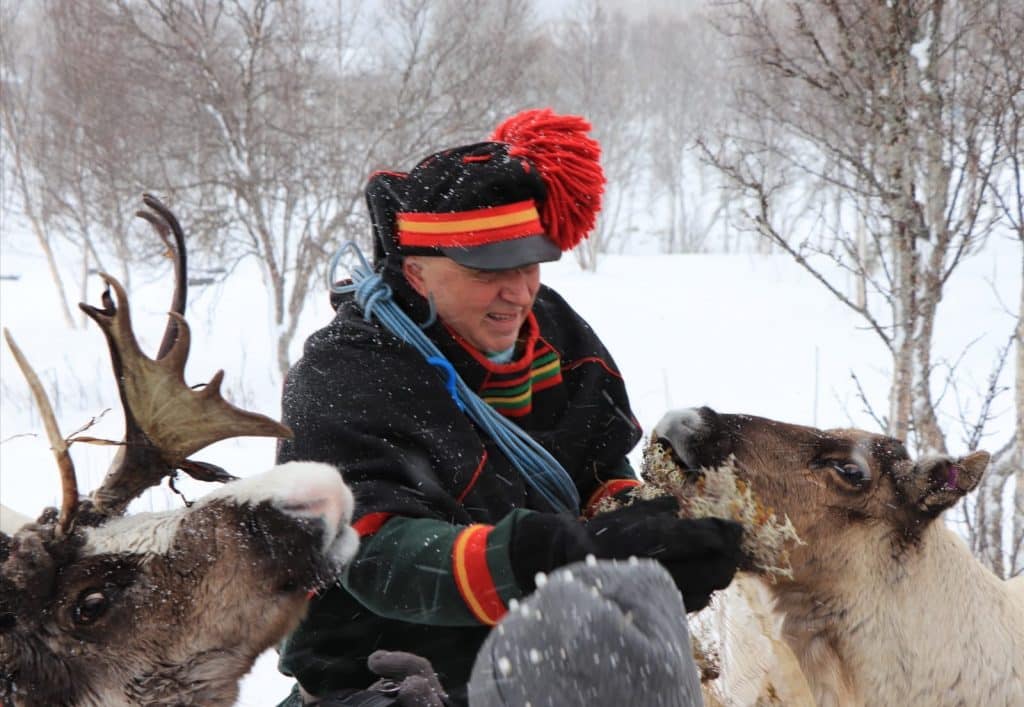
APPENDIX: HOW WAS THIS GUIDE CREATED? WHERE DID THE INFO COME FROM?
Speaking simply from my recollection, it is fair to say that most of the questions we get from our clients regarding things to do and see in Scandinavia have to do with viewing the Aurora. The Norwegian fjords probably get the silver medal here, but that is for another… well, another practical guide. Moreover, I can also say that the NUMBER ONE question is some variation of: “what is the best time to see the Northern Lights?”
It felt natural, then, to develop a reference document containing all this knowledge, all the answers we have been providing to clients and friends over the years, but in some organized fashion.
The question remains: “how did YOU learn that stuff, Marcelo?” In one word: conversationswithexpertsonthetopic. Much like the way people learned things hundreds of years ago (and still do!), I learned these things by being curious and talking to the locals every time I visited Iceland, Norway, Sweden and Finland. I have spent hours chatting with many of the crazy-knowledgeable guides that we, at Discover Scandinavia Tours, use over there. They are gals and guys who are really passionate about all the awesome things one can experience in their Nordic little corner of the world, including the Northern Lights.
Also crucial have been my conversations with our returning clients, about their own experiences: what worked, what didn’t, what was unexpected, what was amazing. In other words, our clients are our most prized knowledge-multipliers, so we listen to them carefully.
Finally, a little reading always helps, so I have also consulted books and blogs, of course, but mostly from a comparative perspective, a way to understand what is already out there and what is not.